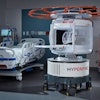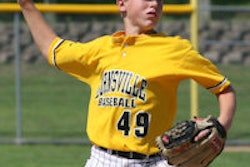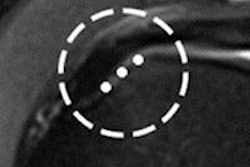Rotator cuff tears appear to occur more frequently in the early postoperative period and are associated with inferior clinical outcomes, according to a study presented at the recent American Orthopaedic Society for Sports Medicine (AOSSM) annual meeting in Providence, RI.
Using serial ultrasound exams after arthroscopic repair of large and massive rotator cuff tears, researchers at the University of Michigan in Ann Arbor found that most retears occur within three months of surgery and at the original site of repair.
"Our findings suggest that retears occur early and likely reflect the failure to heal rather than direct tearing after healing," said lead author Bruce Miller, MD, from the university's division of sports medicine and department of orthopedic surgery. The study received AOSSM's O'Donoghue Sports Injury Research Award.
Miller and colleagues noted that despite advances in arthroscopic repair of rotator cuff tears, recurrent tears after surgery remain a significant clinical problem. There has been no clear answer to whether the recurrence reflects a failure of the rotator cuff to heal correctly or if the healed rotator cuff tears again.
Mechanical or biological
"Defining the timing of tear occurrence should help us understand the ideology of structural failure," Miller said during his presentation. "We believe that early retear [of the rotator cuff] may reflect a mechanical cause, such as the failure to repair the construct itself, while a late retear might reflect a biological cause, such as failure of the tendon and bone to heal."
The researchers enrolled 22 consecutive patients undergoing rotator cuff repair for large and massive tears. The prospective study used MRI and ultrasound to identify large and massive tears as greater than 3 cm. The tear size was confirmed by fluoroscopy.
After surgery, patients were immobilized in a sling for six weeks and began limited motion after four weeks.
"Postoperatively, diagnostic ultrasound exams were performed by a musculoskeletal radiologist at two days, two weeks, six weeks, three months, six months, and 12 months," Miller said.
Tear recurrence
After review of the images, the researchers identified a total of eight (36%) recurrent tears of the rotator cuff in the 22 subjects. All eight recurrent tears occurred at the original repair site.
Two of the eight recurrent tears occurred within two weeks, while three of the eight retears were identified at six weeks. There was one recurrent tear at three months and two retears at six months. More specifically, six recurrent tears occurred within 69 days of surgery and two retears occurred after 174 days. There were no recurrent tears after six months.
Based on the results, the researchers concluded that recurrent rotator cuff tears are common after arthroscopic repair of large and massive tears, and recurrent tears appear to occur more frequently in the early postoperative period. In addition, recurrent tears are associated with a trend toward inferior clinical outcomes.
Treatment strategies
Miller noted that the study's findings may elicit strategies to reduce the recurrence of rotator cuff tears. The potential solutions include improving surgical repair techniques and rehabilitation strategies, as well as enhancing a patient's tendon-bone interface.
He and his colleagues plan to extend their follow-up of this population to two years, in addition to continuing efforts on how to improve healing during the early postoperative period to reduce the incidence of the recurrent tears.
"What is not really well defined is the appearance of the natural healing of the tendon and bone interface by ultrasound, and we hope to look at this population to help better define that," Miller said. "I suspect that [MRI and ultrasound] give you different types of information, but certainly the value of ultrasound would be that it allows for the ability to do dynamic imaging."
By Wayne Forrest
AuntMinnie.com staff writer
July 29, 2010
Related Reading
Study: Rotator cuff treatment provides tendonitis relief, June 30, 2009
Ultrasound elastography shows strength for diagnosing rotator cuff tears, January 15, 2009
Isotropic 3T MRI aids in diagnosing labrum, rotator cuff tears, December 29, 2008
Making the most of MRI to assess the rotator cuff pre- and postinjury, November 9, 2007
Copyright © 2010 AuntMinnie.com



.fFmgij6Hin.png?auto=compress%2Cformat&fit=crop&h=100&q=70&w=100)




.fFmgij6Hin.png?auto=compress%2Cformat&fit=crop&h=167&q=70&w=250)











